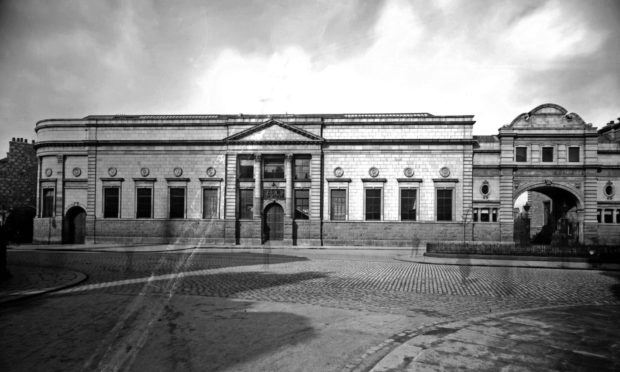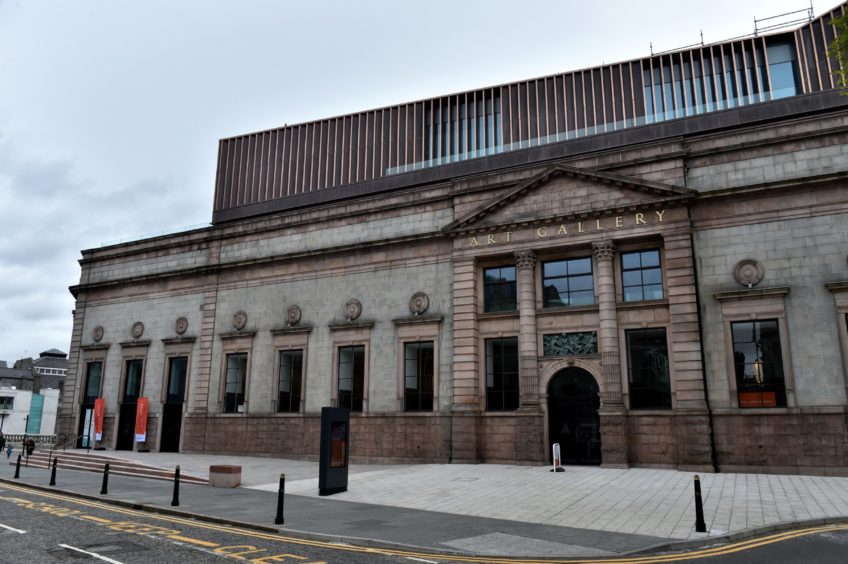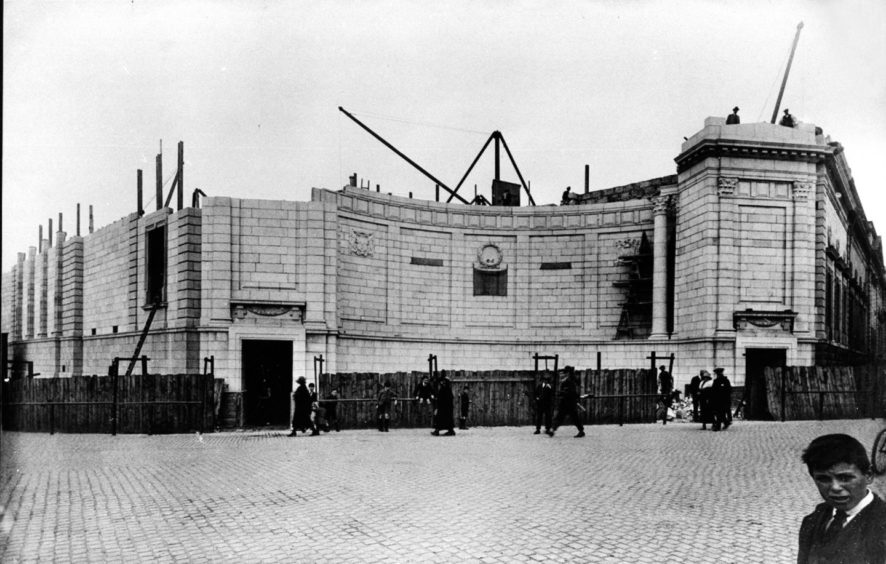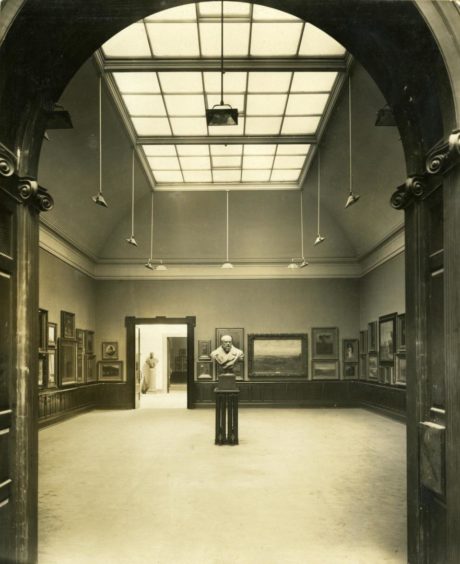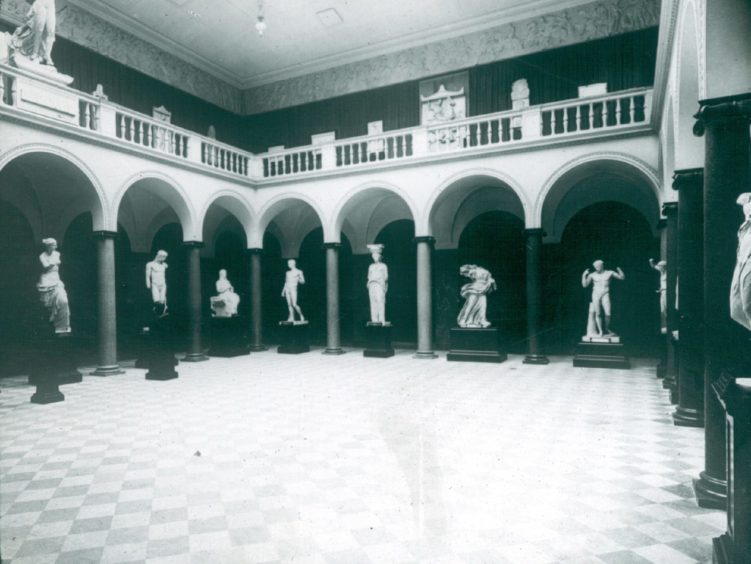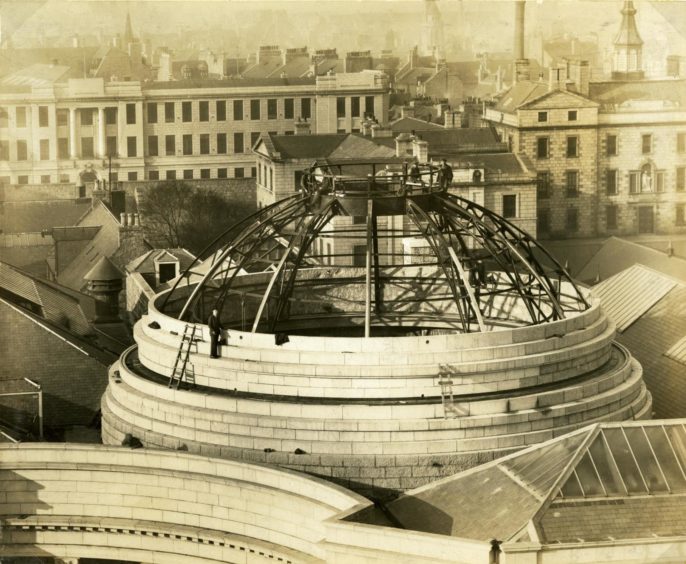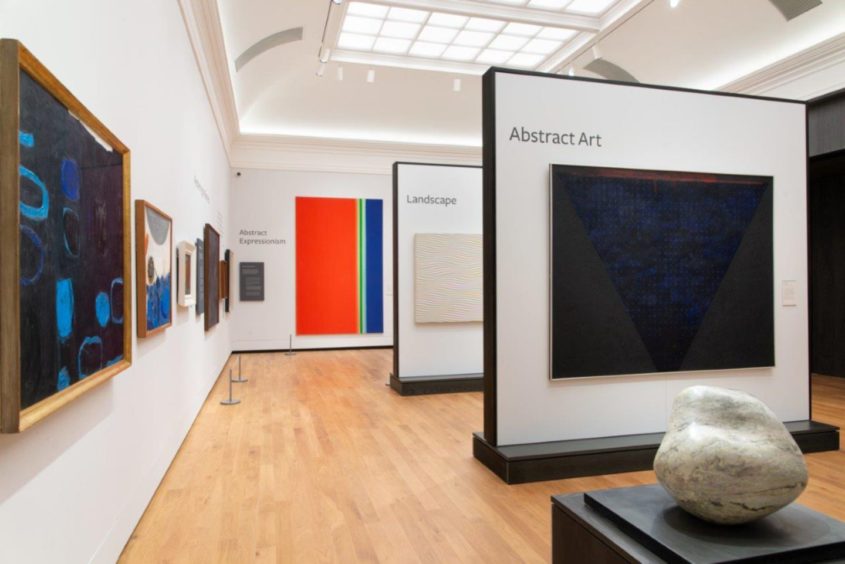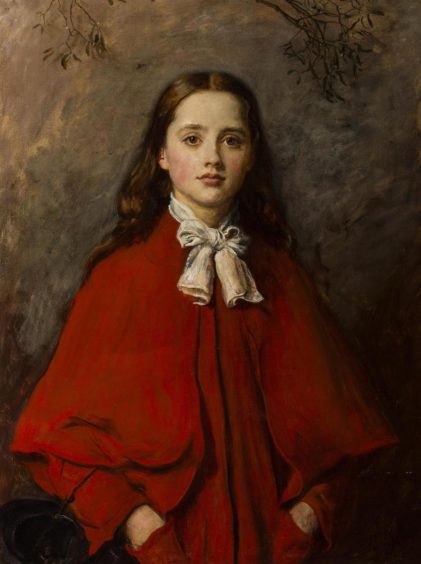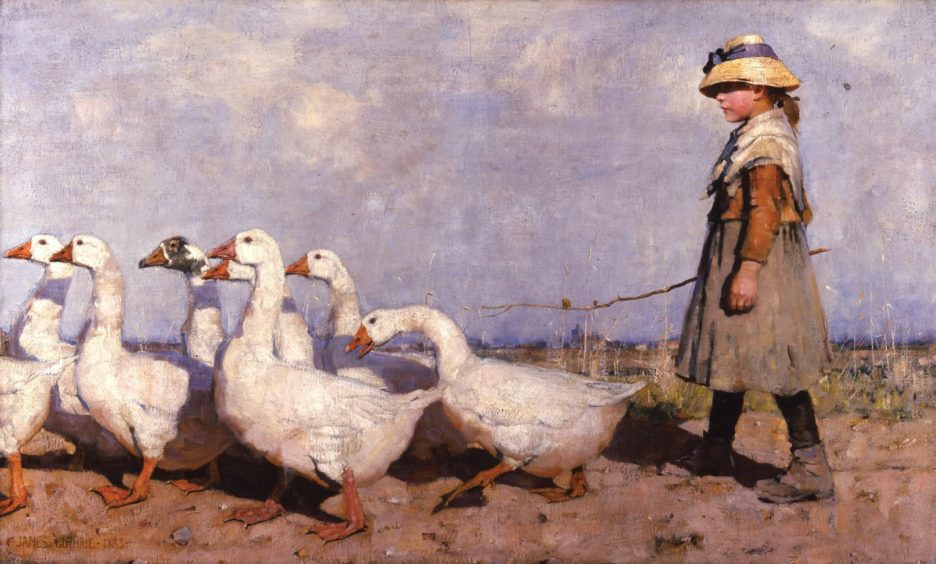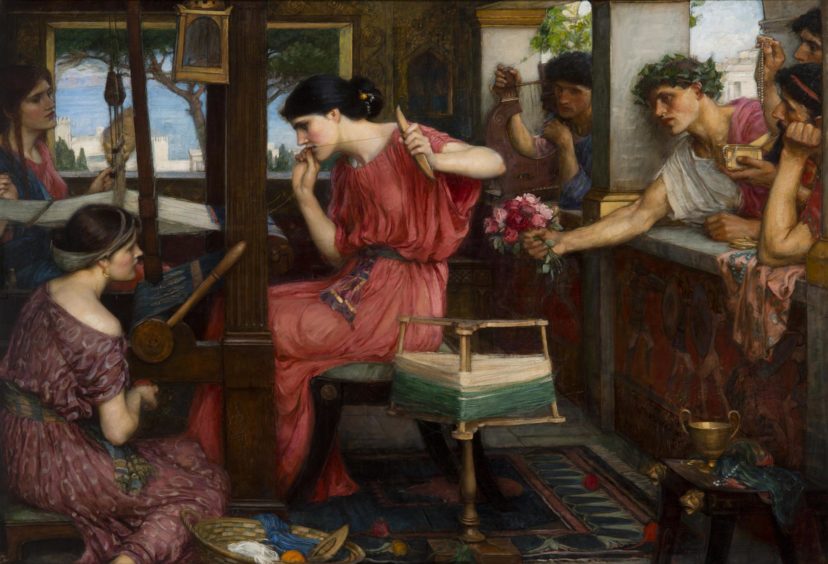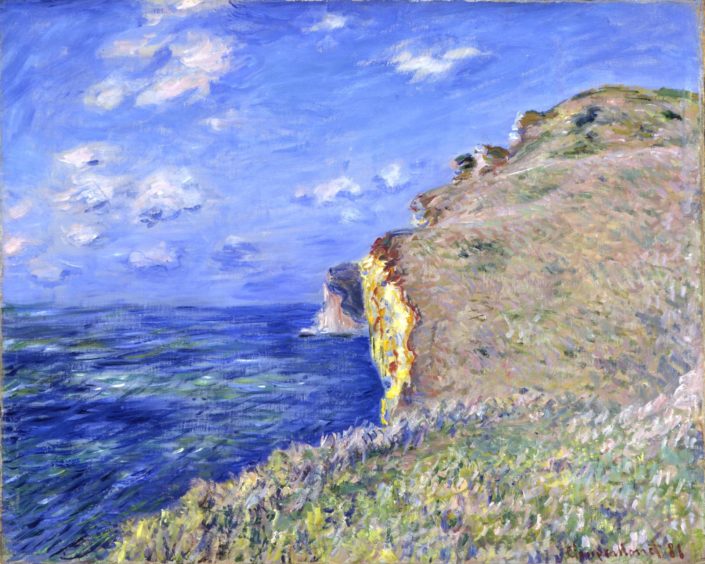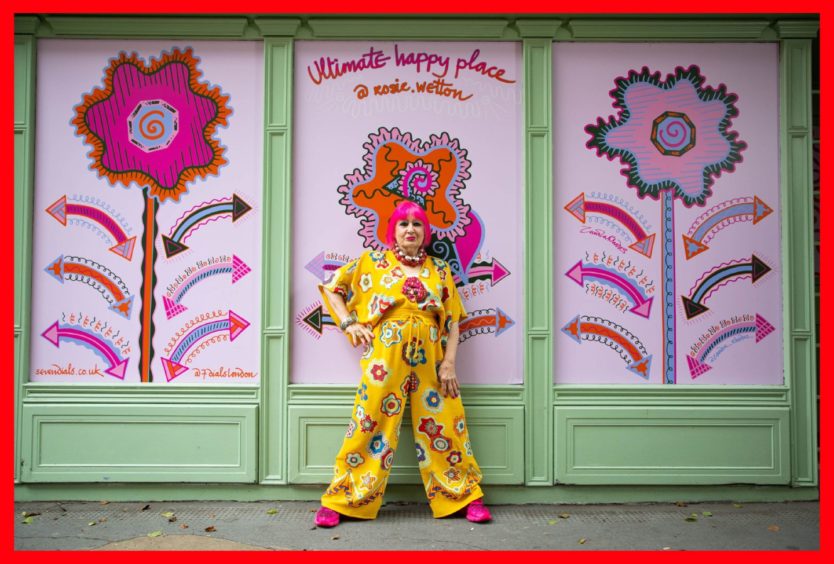Aberdeen Art Gallery is a masterpiece that has been 135 years in the making – and the much-loved iconic treasure trove on Schoolhill is still very much a work in progress.
From its origins as a place to showcase not just the work of local artists and collectors, but also the latest industrial innovations of the Victorian age, it has expanded, changed and morphed into one of the finest art collections and most highly rated galleries in the UK.
Just last month it earned the prestigious accolade of being named as a winner in the Art Fund Museum of the Year Awards after its stunning £34.6 million renovation and it is widely recognised as being home to one of the finest art collections in the UK.
The gallery is very much at the heart of the Granite City, especially today when its graceful and iconic war memorial to Aberdeen’s Fallen – built 95 years ago – takes on such poignant significance.
Amazing building
Little wonder, then, that Christine Rew, art gallery and museums manager for the city council, says it is still loved by Aberdonians as much as it has been for generations.
“The art gallery is an amazing building, and the collections are also fabulous. We have international standard collections, on your doorstep. You don’t have to travel anywhere to see them. You can come in and see a Renoir or a Tracey Emin, whatever takes your fancy.
“There is something about a building and a collection that you go and visit regularly and enjoy. It’s a space to meet friends, it’s a space to shelter from the rain. There is a tradition of local people visiting regularly, popping in – it becomes part of your culture and part of your heritage.
“With that comes an amazing affection. We are often touched at just how warmly people feel about the gallery and their favourite works.
“And in these times, it’s good to have somewhere you can go to step away from all the anxieties and stress you might feel and engage with a piece of art and just enjoy that safe comfortable space.”
Culture to the masses
The origins of the gallery can be traced back to the 1870s, a time of fevered innovation, entrepreneurship and philanthropy in Aberdeen – with a love of the arts and drive to bring culture to the masses front and foremost.
Christine said at that time a number of those prestigious and forward-looking people were keen to ensure Aberdeen was showing works of arts in a dedicated space in the city, as well as somewhere to display technological developments of the day.
“By 1882, an art gallery and industrial museum committee was established to take forward that idea. A number of people made very generous donations that allowed the building work to start. By 1885 the Art Gallery, designed by Alexander Marshall Mackenzie, was opened,” said Christine.
“It was used originally for what we would call touring exhibitions, exhibitions of loans for some industrial objects and also exhibitions of art from the local Aberdeen Artists Society. That connection continues through to this year, when we hosted a virtual exhibition with the society.”
Grand ceremony
The gallery had a small extension to the west of the building in 1902 – it is where the visitors enter at the moment under the Covid restrictions – then in 1904 it was extended again.
Christine said: “That’s when the new Sculpture Court was created, which is based on an Italian loggia, with the marble checkerboard floor with the first floor level forming that square around the courtyard at both ground and first floor, which hadn’t been the case before.
“There was a grand ceremony at the time as the Granite Association donated 12 columns in honour of the city’s main industry. Also at that time, the chairman of the committee, James Murray, brought casts of the world’s masterpieces of sculpture and they stood around the courtyard in the archways.
“We have photographs of the time which show behind them there were curtains and upstairs there were curtains. It was quite a different approach to showing art from nowadays.”
Honour the Fallen
Also, a curator was appointed and a fund for acquiring new paintings established.
The next major change came in the 1920s. After the trauma of the First World War, Aberdeen needed a fitting place to honour those who made the ultimate sacrifice and a War Memorial, to be paid for by public subscription, was called for.
But the idea was not only to look back. At the same time, Lady Cowdray made a donation to establish a space for art and music and exhibitions.
To make this happen, the gallery once again called on Alexander Marshall Mackenzie, to create both the stunning city Cenotaph, with its granite Lions, the poignant Remembrance Hall within the gallery and the elegantly, beautiful Cowdray Hall, bringing art and music together.
They opened in 1925, 40 years after Mackenzie had called the gallery itself into being.
“Gray’s School of Art, which is in the Robert Gordon University Building that is joined to the gallery by what we call our own little Bridge of Sighs, was also designed by Mackenzie. So that whole plaza was designed by Mackenzie, which means it’s really quite a coherent space,” said Christine.
Icing on the cake
Other changes followed in the 1950s, 60s and 70s, but the most significant change came about when five years ago, the gallery closed its doors for a major renovation, which was universally welcomed and praised when the building reopened last year.
The facelift has been a stunning transformation, including the addition of a new floor and rooftop outdoor spaces. But the changes have been carefully thought out to retain and be faithful to Mackenzie’s original frontage.
“With the rooftop extension, the points of that on the frontage, the south elevation, meet the exact points of the 1885 building, so it is speaking to it on the top floor,” said Christine.
The magnificent revamp also secured the Museum of the Year accolade for the gallery.
Christine said: “That felt fantastic. As you can imagine it’s been an odd year and we had to close the gallery just a few months after we reopened it. Having to pause something when we were on a trajectory of lots of wonderful stuff that was just going to build and build throughout 2020 and then all of a sudden you are stopped. That was tough, so getting the Museum of the Year award was a bit like getting the icing on the cake. It was really good to have some positive news to celebrate and it was a morale boost for all of the team.”
A generational change
Christine agrees that the gallery has always been, and still is, a work in progress. “What we are seeking to achieve with the most current one is a generational change that will make the building fit for purpose for an entire generation.”
But the building itself is only part of the story. The art it holds is just as precious – and just as revered.
One of the collections’ major boosts came early in its history when local granite merchant Alexander Macdonald bequeathed his entire collection to the gallery in 1901.
“He had been part of the group really advocating for the establishment of an art gallery in Aberdeen, because he and a number of others were amassing their own private collections,” said Christine.
“Macdonald was very friendly with the artist George Reid. I think through him, Macdonald met a number of living artists and he commissioned many to paint artist’s portraits of themselves and fellow artists and gathered that collection. But he also gathered a number of other really interesting pieces.”
130 years of collecting
Among the works gifted by Macdonald was one of the most-loved paintings in the gallery today, Bright Eyes, by Sir John Everett Millais.
“Macdonald bought it the year it was painted. It hung in his dining room then it came to us in 1901.”
At the same time, the city council invested a capital sum of money, the interest from which has been used over the years to acquire works by living artists.
Christine said: “Because Macdonald collected contemporary work, the whole concept of the collection has very much been on building and acquiring new works of art as they are made or within the past 20 or 30 years.
“This has meant we have more than 130 years’ worth of contemporary collecting. A good example of that is To Pastures New, the one often known as the Goose Girl. It was painted by James Guthrie in 1883, but it was presented to us in 1888, only three years after we opened and within five years of that work having been painted.”
The Goose Girl is one of the best known and most loved paintings in the gallery. Christine said favourite pieces were down to personal taste.
“For others it’s Francis Bacon’s seminal piece, the Pope. That was a first of a series of Pope paintings he did.
“Others are things like Penelope and her Suitors by Waterhouse, which came to us through another collector, James Murray. It was very much criticised for the high price of the work of art. People at the time in 1912, thought it was a really irrelevant theme and historically inaccurate because Waterhouse painted it with characters from the time. It shows you how opinions about art are always divided and people always have different ideas.”
Taken aback at quality
Over the years the gallery has been blessed by incredibly generous donations from individuals, sometimes entire collections, as well as funding support by a number of grant-giving bodies and also by “adventurous collecting” by a number of curators since the 1960s.
It has helped build the eclectic and wide-ranging nature of the collection that makes it so special.
“It has amazing variety and you don’t see that, necessarily, in other public collections outwith the major national collections held in places like Edinburgh, Glasgow and London,” said Christine.
“The beauty of the Aberdeen collection is you have this fantastic collection of British art, but also Impressionist paintings – Monet, Renoir, Sisley – a whole range of works like that.
“We have names people will recognise like Joan Eardley, plus many of the modern masters – Tracey Emin, Gilbert and George and Alison Watt.
“People are often surprised, when they have come from somewhere else across the UK, or overseas, were absolutely taken aback at the quality and depth and range of the collection.”
Today the gallery is facing new challenges. For the first time in its history, it was forced to shut its doors by events beyond its control earlier this year. Covid-19 achieved something even the Luftwaffe bombers couldn’t do.
Be a tourist
“Even during the war, the gallery didn’t close,” said Christine. “The most valuable works were moved to the basement and others were dispersed to the countryside to avoid the air raids. But the gallery continued to host exhibitions, music recitals and lectures. The Covid closure is the first that has been forced on us.”
The gallery is open again but its closure saw it ramp up its digital offering and will continue to do so. On its Museum From Home page, people can find concerts from the Cowdray Hall, tours and talks from curators as well as key art works being explored and explained.
But Christine is confident the gallery will come through this current crisis and again be at the heart of the city’s life, from old favourites to rotating works from the city’s extensive collection – as well as hosting the prestigious British Art Show next summer.
“We are encouraging people to be a tourist on your own doorstep. The gallery is free, you can walk in and use our QR code to book your slot or you can book in advance online. We have the BP Portrait Award on at the moment and we are looking forward to bringing an exhibition about Zandra Rhodes, the fashion designer, to Aberdeen in spring next year.”
